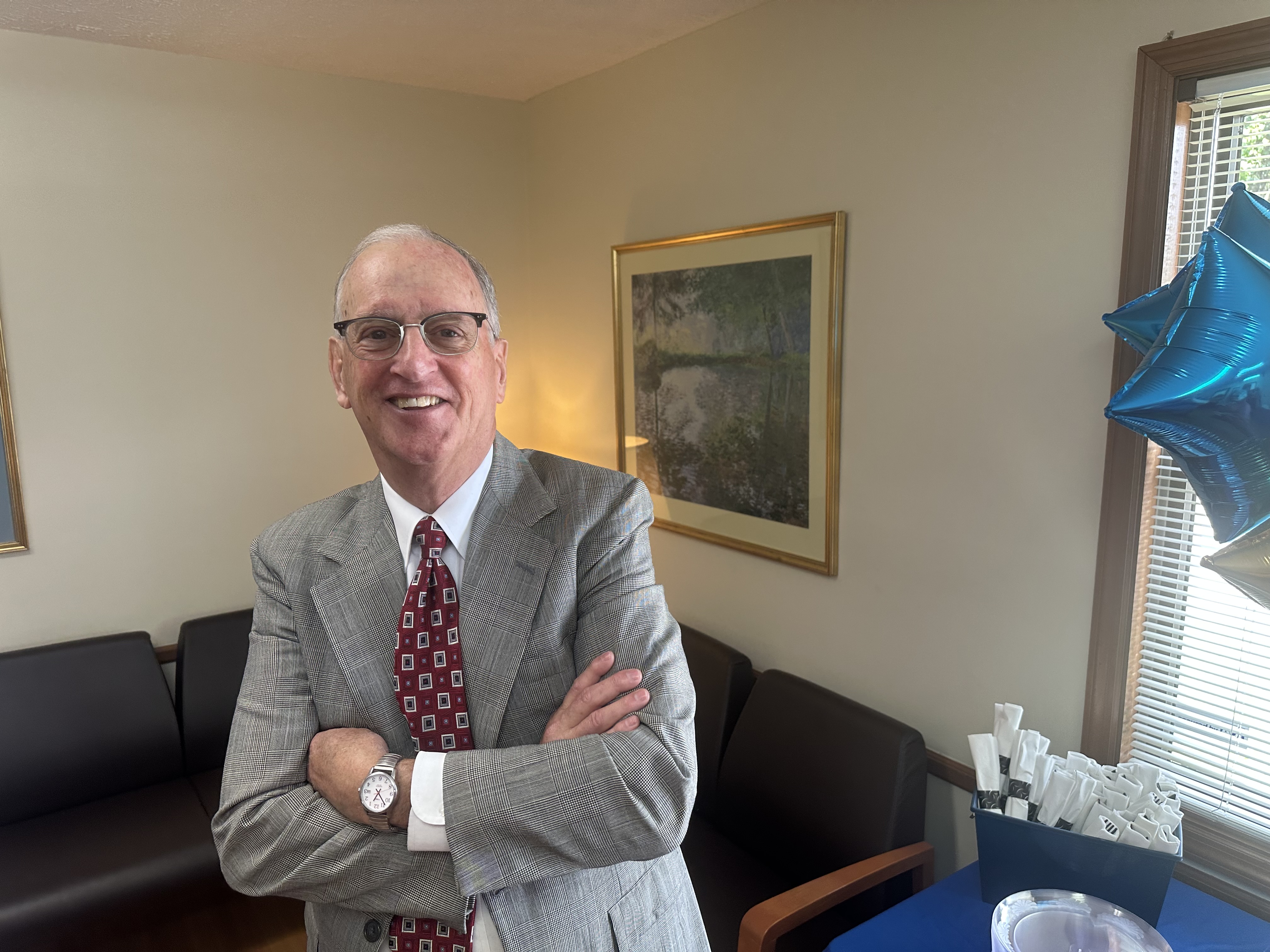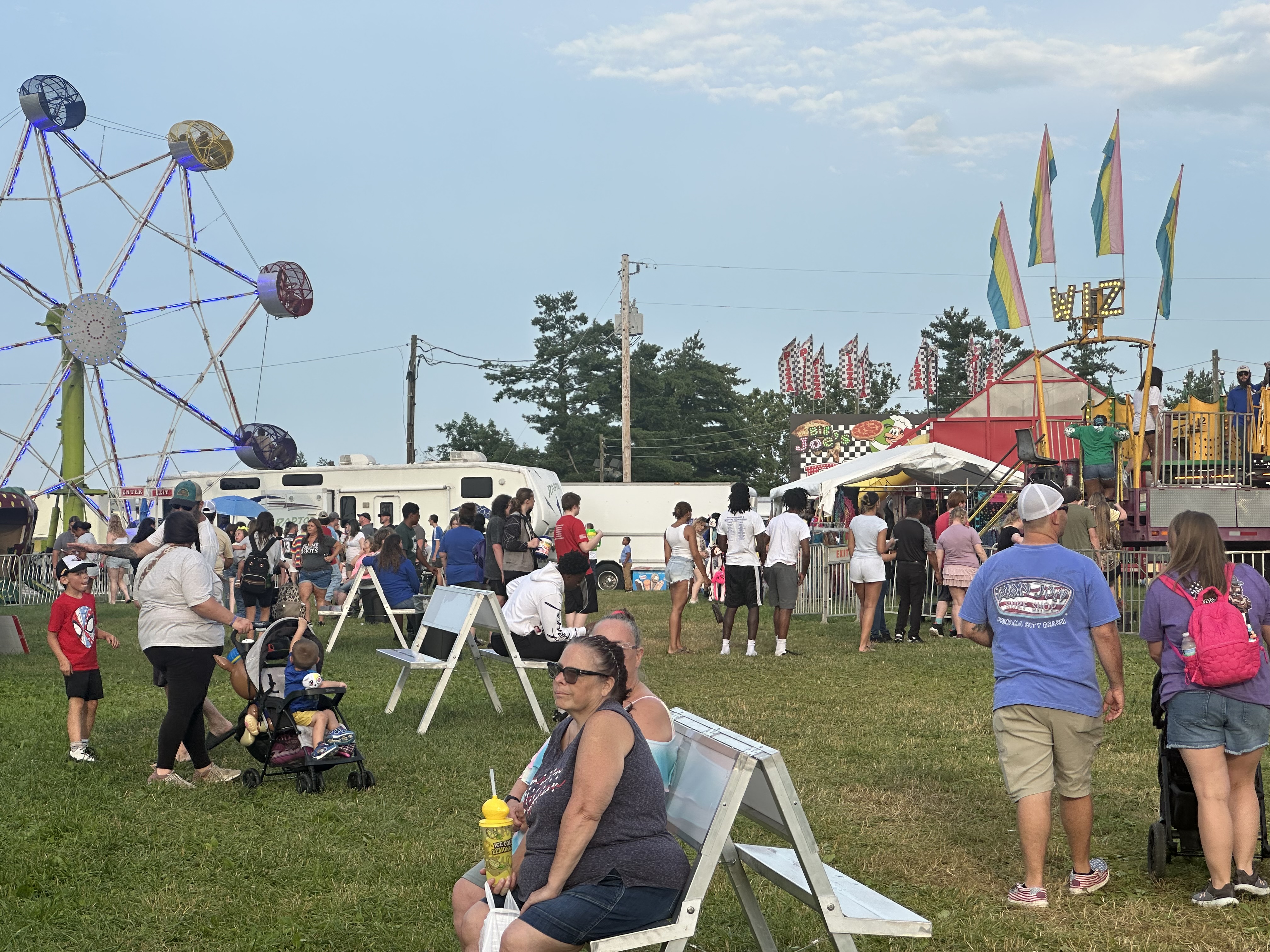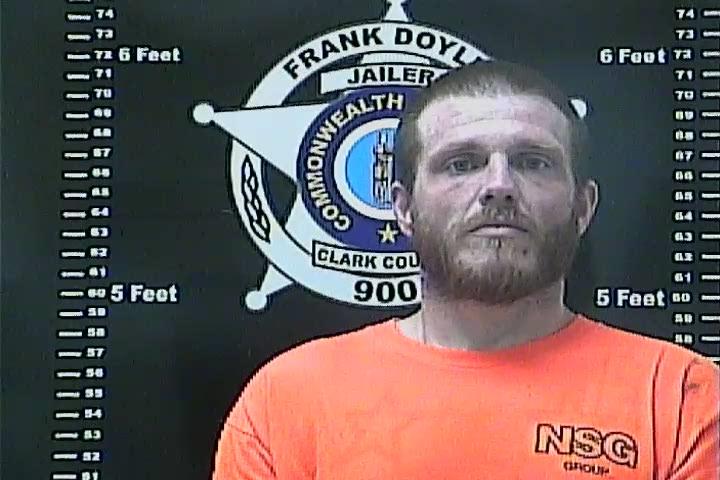Closer Look: Groups respond to report’s findings, work to tackle addiction
Published 10:06 am Monday, October 28, 2019
Editor’s note: This is the first installment of a four-part series taking a closer look at the findings of the recent “One Step At a Time” report released by The Greater Clark Foundation and The Harwood Institute for Public Innovation. The series will run each weekend.
It has been nearly three years since the release of The Harwood Institute report, “Waving the Community’s Flag,” an in-depth look at how community members view Winchester and Clark County.
At that time, in 2017, residents talked about their love for Winchester and Clark County, hailing it as a great place to live, filled with a spirit of generosity, small-town atmosphere and rich history. But they also described looming challenges and a great division among its people.
Now, The Harwood Institute is back. This week, it released “One Step At A Time,” a progress report highlighting the many stories of action now taking root and the spread of new productive ways of working together in the community.
The Sun will dive deep into these stories for the next few weeks to take a closer look at the Clark Countians behind the progress toward a better community for all.
PART ONE: Tackling substance abuse
The Sun has written extensively about the opioid epidemic and the substance abuse and addiction plaguing Winchester since the beginning.
Many groups have surfaced over the years to curb the issue, aiming to reduce the epidemic’s grip on the community.
The “One Step At A Time” report touches on two groups, 180°: Turning Clark Around and Achieving Recovery Together.
180°: Turning Clark Around
180°: Turning Clark Around, which started as the Substance Abuse Team that came out of the public innovators lab in 2017, had a tough time getting started.
They lost a few of their members because of a variety of personal and professional reasons, but Jennifer Gulley of the Clark County Health Department, and Roy Hudson, a retired manufacturing plant supervisor, remained.
Gulley is involved with the department’s needle exchange program as well as the Clark County Agency for Substance Abuse Policy (ASAP).
According to the report, she initially joined the team, in part, to get the word out about current efforts to curb the opioid epidemic.
Hudson joined as he saw too many family members and friends succumbing to addiction, according to the report.
However, the issue was a heavy lift for just two people, and their work eventually stalled. That is until Linda Barrett of The Greater Clark Foundation urged Terry Davidon, executive director of the Clark County Homeless Coalition, to meet with Gulley and Hudson.
Davidson also attended the public innovator training. Davidson and a few others had initially wanted to tackle low-income housing, but as time went on, interest dwindled for various reasons.
“We just kind of floundered,” she said. “We had good intentions… but eventually everyone trickled off, and nothing happened.”
But when Davidson joined Gulley and Hudson, the three of them clicked.
The three made the choice to revive the Substance Abuse Team by hosting community conversations with people in recovery.
“We had learned to turn outward, to get the public’s knowledge, to get people to speak authentically because we needed knowledge from those who had lived experience,” Davidson said.
The team pulled the first conversation together within just a few weeks. And what they heard was surprising.
“The first thing that surprised everybody was when we asked, ‘What kind of community do you want?’ Every person said they wanted a safe and drug-free community,” Davidson said. “… I work with people in all stages of addiction and have for many years, and it never occurred to me that they want a safe and drug-free community. They want the same things as everybody else.”
According to the team’s nine-page summary of the four community conversations they held, “In Their Own Words,” the nearly 50 participants, who were active in varying stages of recovery, wanted a “safe, drug-free community where there is understanding and support for those in addiction and recovery without judgment and stigma.”
People told the team they wanted hope for a better future.
The report also contained comments about why participants started their drug use.
“My mental illness was not addressed when I was young, and that is what led to me using drugs,” one participant said in the summary. “I wonder what my life would look like today if my mental illness had been identified early?”
“My husband had oral surgery last week,” another participant said. “He was given a prescription for a whole bottle of Lortab to get filled before the surgery so he would have it. I asked the dentist why she was giving that many, and she said it was just as cheap to get the whole bottle.”
Others talked about what kept them from achieving recovery.
“I am here,” one participant said. “Resources are there!”
“People deep in addiction, they tend to lose everything, and that could mean no car,” Davidson said. “Lexington (where rehabilitation and treatment centers are) might as well be on the other side of the planet.”
Some participants discussed what the community could do to make a difference.
“Help kids feel like they don’t need drugs,” one participant said.
“Don’t talk to me about God early in recovery,” another said. “Take religion out of it.”
Davidson said they heard from people in recovery talk about how they were afraid to ask for help.
“One woman (talked about) when she was arrested for the first time for selling drugs and she said, ‘I was almost relieved because at least now I’d get some help.’ But she didn’t get any help,’ Davidson said. “She thought the jail would help, the judicial system would help but they didn’t help. The result of that was it reinforced that belief that nobody cared… And there was no way out. She thought, ‘Why should I even try?’”
According to One Step At A Time, the “judgments” come from a host of people and places, including officials, their churches and the public at large.
The stigma reinforces drug use, participants said.
“It was raw,” Davidson said of participants’ honesty. “It was really amazing how much people were willing to be completely real and honest just because somebody was willing to listen.”
The team also spent time weighing how best to release their community conversations summary.
According to the report, they discussed possible strategies with various community leaders and tried to enlist local groups as “champions” for the report — but to no avail.
The tension is the result of some of the material being sensitive — critical of the courts, jail and other public institutions that make decisions about people with addictions and their families, according to the “One Step At A Time” report.
Davidson said the report shouldn’t be looked at as critical, though.
“It’s not about what we’re not doing; it’s about what we can do,” Davidson said.
Davidson said she was convinced of the benefits of bringing this community knowledge to light. So the 180° Team released “In Their Own Words” to physical and mental health providers, ASAP, judges, other public officials and more.
“We’re kind of working behind the scenes with this,” Davidson said, adding she’s unsure if the contents will ever be released to the public at large.
Gulley presented the report to the Northeast Area Education Health Center (NE-AHEC), which was looking for public insights to inform their work on the opioid crisis.
According to “One Step At A Time,” the director of NE-AHEC, who also serves as chair for the Northeast Kentucky Opioid Crisis Consortium, immediately understood the power of the findings and now wants to extend the community conversations across seven counties in NE-AHEC’s region.
Beyond getting the “In Their Own Words” in the right hands, Davidson said she’s unsure what the next steps will be, but there is more to be done. The group is currently having conversations about just that.
“I don’t think our work ends,” Davidson said. “What we’ve done so far, I think it’s just a little scratch on the surface.”
Achieving Recovery Together
Achieving Recovery Together founders Juanita Everman and Amber Fields-Hull are well acquainted with drug and alcohol addiction.
They’re both in recovery themselves.
They connected at Celebrate Recovery and later attended one Celebrate Recovery event together, which led them to participate in a statewide leadership academy on recovery led by People Advocating Recovery.
From that, they were inspired to create Achieving Recovery Together, or ART, which a What’s Your Ambition?! funded. ART started with the goal to create a new pilot project, which they brought back to Clark Regional Medical Center in late 2017.
The basis of the pilot project is people struggling with addiction are more likely to enter treatment programs if they can quickly connect with a sympathetic person who experienced substance abuse themselves.
Fields-Hull said she and Everman began talking to the hospital about letting peer support specialists in to talk to people who had an overdose.
ASAP gave the funds to train the peer support specialists. It took 10 months to train the first specialist and get the hospital on board. Now, ART currently has more than 20 peer support specialists, Fields-Hull said.
“(Peer Support Specialists) get there within 30 minutes of the call to the hospital and they give the patient a brief story about themselves, what they’ve been through and how they got sober,” Fields-Hull said.
If the patient wants treatment, ART will connect the patient with a care coordinator who will help find them treatment options.
If they want to go to rehab, they are usually placed there directly from the ER and ART helps provide transportation, but there are other treatment options like medically-assisted detox, medication assisted therapy, intensive outpatient programs, referrals to counseling and more.
If they’re not interested in treatment at the time, the peer support specialist leaves information about how to contact the agency with the patient.
“And usually what happens is a few months later, the person is ready to seek treatment and they reach out to us and we are there for them,” Fields-Hull said.
The hospital provided only some assistance to patients with addictions before ART was on the scene. Staff would treat an individual’s acute conditions, only to discharge them, according to “One Step At A Time.”
With ART, the whole game changed. Now, ART receives calls to the hospital an average of three times per week, but recently had four calls in one day.
“It fluctuates, especially depending on the time of the month,” Fields-Hull said. “We get a lot of calls at the beginning of the month.”
Robert Parker, former CRMC CEO, allowed ART to expand the program beyond just overdose patients to anywhere there was suspected substance abuse, so that could be a pregnant mother who tested positive, someone with an infection likely caused by IV drug use, etc.
“It expanded further than we had originally thought,” Fields-Hull said.
ART now has a 52% percent success rate of getting people into a treatment program, according to “One Step At A Time. “
“I think it’s pretty simple,” Fields-Hull said. “It’s giving people a glimmer of hope. Having someone come in that has been there has been made the biggest difference. This is a small town. The patients are sometimes people we know. If we don’t know them, we’re able to share our own stories and they relate to them. There’s no judgement there because we’ve been there and they’re more willing to talk.”
They were just getting set up when the 180° Team launched its community conversations.
Everman joined the 180° Team and Fields-Hull quickly followed. They assisted with the community conversations and with the meetings on what to do about releasing the summary report.
ART also started reaching out to people with addictions on Fridays during the health department’s needle exchange program.
In April 2019, Everman and Fields-Hull took another positive step.
This time they opened a storefront downtown, where their peer-counseling services are more visible and accessible to the community.
ART also offers life-skills classes to help people stay sober. Volunteers — all individuals in recovery themselves — donate their time to make the new office possible.
“I lost my husband (I’ve since remarried and have two children) about six years ago from a drug overdose, and we were both using,” Fields-Hull said. “We didn’t know there were options for help. We didn’t know help existed. Now there are options for people who want help.”
The organization is now partnering, not only with the hospital and the health department, but also with ASAP, the Department of Community Based Services, the drug and mental health courts, OBGYNs in town and the school district, where they do drug and alcohol awareness programs.
The program has recently expanded with a Quick Response Team grant from the state.
Now they get the names and addresses of people who call for help in drug-related situations.
“We can follow-up with the people who need help but aren’t showing up in the hospital or ER,” Fields-Hull said. “We work with DCBS to help people who have lost their custody of their children work their case plan and regain their life and custody of their children. We work with the harm reduction program at the health department and we’ve made a lot of great connections there. There are so many gaps and we’re just trying to reach them where they’re at.”
Fields-Hull said while drug use hasn’t necessarily declined in Clark County, at least there are new groups on the scene providing more options and resources for those in need.
It’s progress.
“I wish we could say that we’ve seen drug use decline in our community,” Fields-Hull said. “I don’t know if it has. But there is an option now.”
Open Your Eyes
For the people who didn’t attend the public innovator’s lab three years ago, and who didn’t become involved in any of the groups that came out of the lab, it may be hard to grasp the depth of change the community has made since.
The “One Step At A Time” report, Davidson said, shows the community the good that can come when people not only come together to converse, but act. And every project is interlinked, Davidson said, because each project has a shared goal: Bettering Clark County.
“People often criticize Winchester… but I wish people would just open their eyes and see the amazing things that are happening,” she said. “For a small town, to have so many people involved in different ways, and I don’t think that could’ve been highlighted enough in that report, but to support each other in those efforts, I think that is what is so amazing… I don’t think anyone could have foreseen that.
“It has been quite remarkable.”








